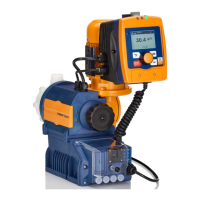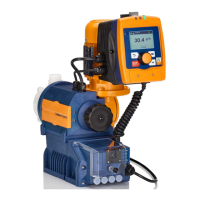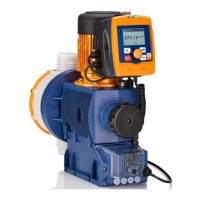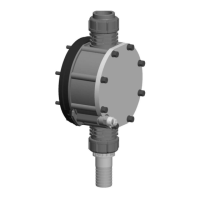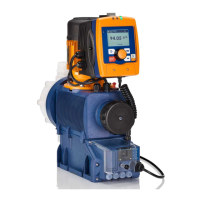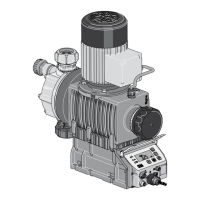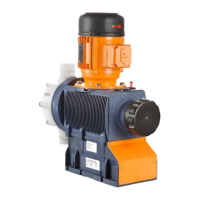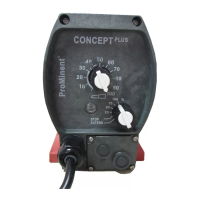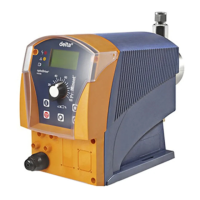Plot a diagram similar to the one above - with values for (I1,
F1) and (I2, F2) – so that you can set the pump as desired!
‘Lower sideband’
Using this processing type, you can control a metering pump using the
current signal as shown in the diagram below.
However, you can also control two metering pumps for different feed
chemicals via a current signal (e.g. one acid pump and one alkali pump
using the signal of a pH sensor). To do this, you must connect the pumps
electrically in series.
The "Lower sideband" symbol appears in the LCD display. Below I1, the
pump works at a rate of F1 - above I2 it stops. Between I1 and I2 the
stroke rate varies between F1 and F2 in proportion to the signal current.
I [mA]
I 1 I 2
F2
F1
0 20
a) b)
P1
P2
Fmax
B0089
I [mA]
I 1
I 2
F1
0 20
P1
P2
F2
Fmax
Fig. 30: Frequency-current diagram for a) Lower sideband, b) Upper sideband
‘Upper sideband’
Using this processing type, you can control a metering pump using the
current signal as shown in the diagram above.
However, you can also control two metering pumps for different feed
chemicals via a current signal (e.g. one acid pump and one alkali pump
using the signal of a pH sensor). To do this, you must connect the pumps
electrically in series.
The "Upper sideband" symbol appears in the LCD display. Below I1, the
pump is stationary - above I2 the pump works at rate F2. Between I1 and
I2 the stroke rate varies between F1 and F2 in proportion to the signal cur‐
rent.
Under menu option
‘Analog error’
you can activate error processing for
processing type
‘Curve’
. For current signals below 3.8 mA, a fault mes‐
sage appears and the pump stops.
Fault processing
Set-up
53

